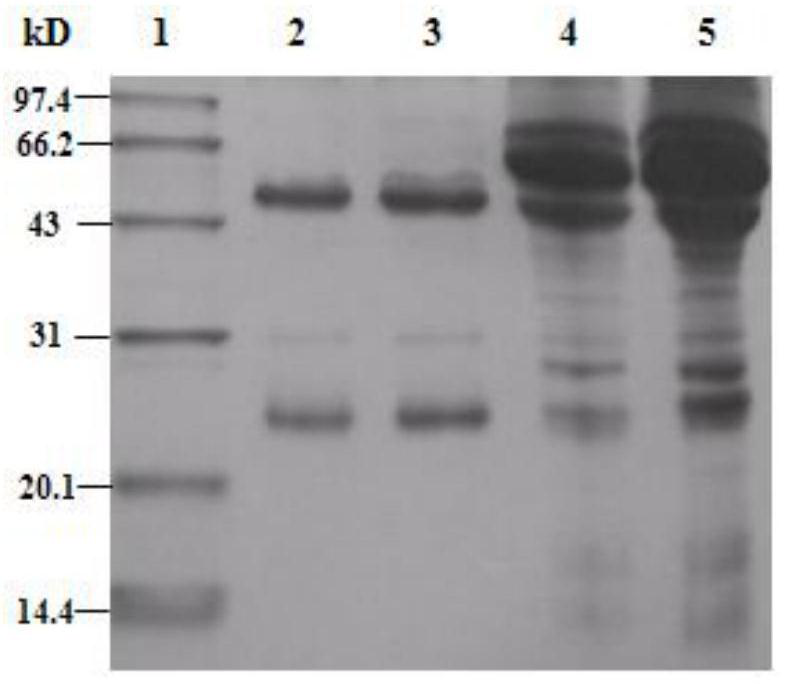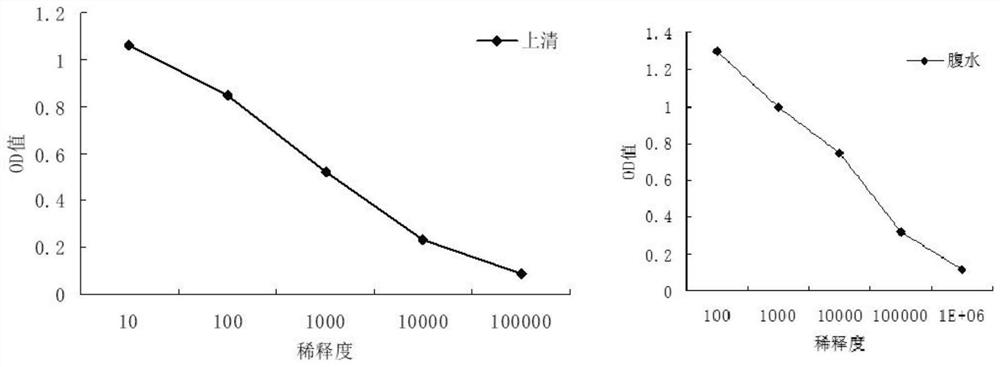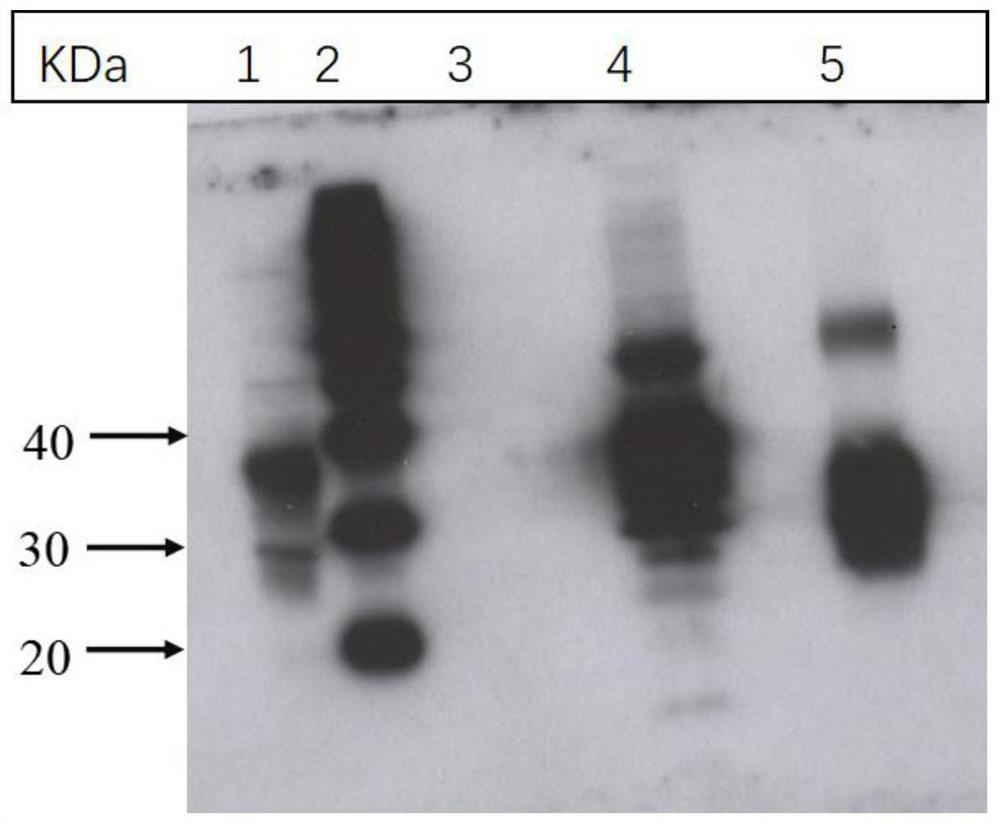Hybridoma cell strain 8D3, monoclonal antibody and application thereof
A technology of hybridoma cell line and monoclonal antibody, applied in the direction of antiviral immunoglobulin, instrument, biochemical equipment and method, etc., can solve the problem of not being able to distinguish between mad cow disease and sheep scrapie
- Summary
- Abstract
- Description
- Claims
- Application Information
AI Technical Summary
Problems solved by technology
Method used
Image
Examples
Embodiment 1
[0039] Establishment of hybridoma cell line 8D3
[0040] 1. Synthesis of immunogens
[0041] Sheep PrP polypeptide (ovPrP 89-104) was synthesized by Shenggong Bioengineering (Shanghai) Co., Ltd., the synthetic peptide sequence: GGGGWGQGGSHSQWNK (see the sequence listing for details), and the carrier protein keyhole limpethemocyanin (hemocyanin, KLH) was coupled with glutaraldehyde ), the purity is more than 95%, and the OvPrP(89-104aa)-KLH polypeptide conjugate is obtained.
[0042] 2. Immunization of mice
[0043] Three 6-7 week old Balb / c mice (purchased from the Institute of Genetics, Chinese Academy of Sciences) were immunized with the synthetic OvPrP(89-104aa)-KLH polypeptide conjugate as the immunizing antigen. The route, dosage and adjuvant of each immunization are shown in the table 1. The first three immunizations were separated by 4 weeks each time, and a small amount of blood was collected from the tail 12-15 days after the fourth immunization to determine the se...
Embodiment 2
[0093] Preparation of monoclonal antibodies
[0094] 1. Recovery of hybridoma cells
[0095] Take out the cryovial from the liquid nitrogen tank, quickly put it into a 37°C water bath, and shake it to thaw as soon as possible. Centrifuge at 1000 rpm for 10 min and discard the supernatant. Suspend the pellet with 20% serum DMEM, add it to the cell flask, and set CO 2 Cultivated in an incubator. The next day, the medium was exchanged with DMEM containing 20% serum.
[0096] 2. Monoclonal antibodies can be prepared by in vitro culture method and / or in vivo induced ascites method
[0097] in vitro culture
[0098]The established hybridoma cell line 8D3 was expanded and cultured until all cells died. The cell culture supernatant was collected, centrifuged at 1000 rpm for 10 min, and the supernatant was stored at -20°C for later use.
[0099] In vivo induced ascites method
[0100] The multiparous Balb / c mice were selected and injected intraperitoneally with sterilized par...
Embodiment 3
[0102] Identification of monoclonal antibodies
[0103] 1. Identification of immunoglobulin subclasses and light chain species of monoclonal antibodies
[0104] Identified with SouthernBiotech kit. The specific method is as follows:
[0105] (1) Coating: Dilute the antibody provided in the kit with a phosphate buffer solution with a pH value of 9.6 to a concentration of 5-10ug / ml, 100ul / well, overnight at 4°C.
[0106] (2) Washing: washed three times with PBS containing 0.05% Tween-20.
[0107] (3) Blocking: block with PBST containing 1% bovine serum albumin, 200ul / well, and incubate at 37°C for 1h.
[0108] (4) Washing: same as above.
[0109] (5) Sample loading: add hybridoma cell culture supernatant, 100ul / well, and incubate at 37°C for 1h.
[0110] (6) Washing: same as above.
[0111] (7) Enzyme addition: Dilute alkaline phosphatase-labeled immunoglobulins, subclasses, light chains and heavy chains with PBST containing 1% bovine serum albumin to appropriate concentra...
PUM
| Property | Measurement | Unit |
|---|---|---|
| Molecular mass | aaaaa | aaaaa |
Abstract
Description
Claims
Application Information
 Login to View More
Login to View More - R&D
- Intellectual Property
- Life Sciences
- Materials
- Tech Scout
- Unparalleled Data Quality
- Higher Quality Content
- 60% Fewer Hallucinations
Browse by: Latest US Patents, China's latest patents, Technical Efficacy Thesaurus, Application Domain, Technology Topic, Popular Technical Reports.
© 2025 PatSnap. All rights reserved.Legal|Privacy policy|Modern Slavery Act Transparency Statement|Sitemap|About US| Contact US: help@patsnap.com



